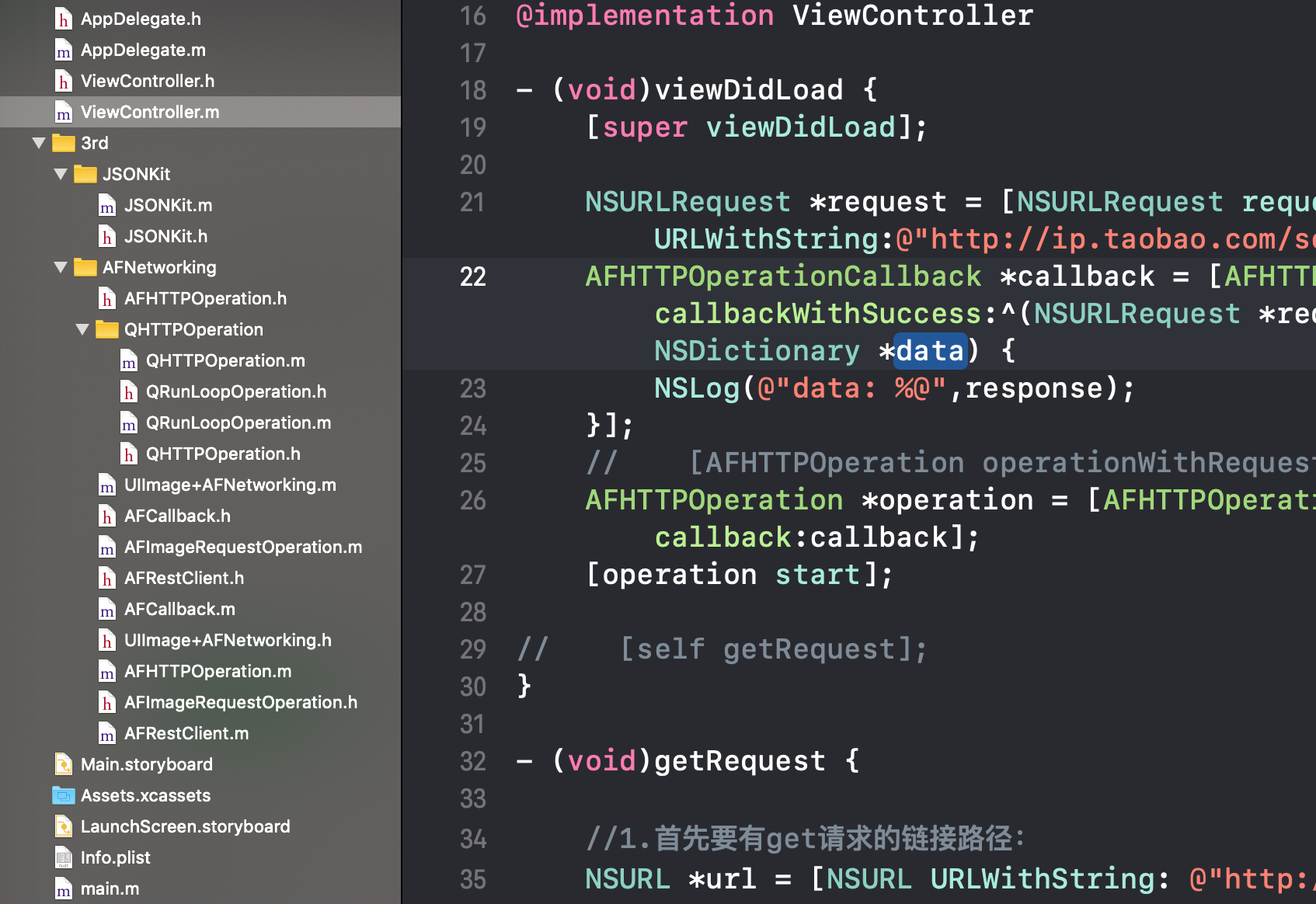Source address:
https://github.com/AFNetworking/AFNetworking/tree/0.2.1
First, add the corresponding library to your Demo, set the MRC and set the new syntax according to the prompts, so that the project can run: Including support for HTTP:
1. Add NSAppTransportSecurity type Dictionary in Info.plist;
2. Under NSAppTransportSecurity, add nsallowsarbitrryloads type Boolean, and set the value to YES;
Let's first analyze how AFNetworking achieves get requests:
@implementation ViewController - (void)viewDidLoad { [super viewDidLoad]; NSURLRequest *request = [NSURLRequest requestWithURL:[NSURL URLWithString:@"http://ip.taobao.com/service/getIpInfo.php?ip=myip"]]; AFHTTPOperationCallback *callback = [AFHTTPOperationCallback callbackWithSuccess:^(NSURLRequest *request, NSHTTPURLResponse *response, NSDictionary *data) { NSLog(@"data: %@",response); response. }]; // [AFHTTPOperation operationWithRequest:request callback:callback]; AFHTTPOperation *operation = [AFHTTPOperation operationWithRequest:request callback:callback]; [operation start]; }
Let's take a look at how to handle the get request directly by Apple's native without using a third party?
- (void)getRequest { //1. First, you need to have the link path of get request: NSURL *url = [NSURL URLWithString: @"http://ip.taobao.com/service/getIpInfo.php?ip=myip"]; //2. Create request object //The request object contains the request header and request method (GET) by default NSURLRequest *request = [NSURLRequest requestWithURL:url]; //3. Get the session object NSURLSession *session = [NSURLSession sharedSession]; //4. Create a task according to the session object (send request) /* First parameter: request object Second parameter: completionHandler callback data: Response body information (expected data) response: Response header information, mainly the description of the server error: Error message. If the request fails, the error has a value */ NSURLSessionDataTask *dataTask = [session dataTaskWithRequest:request completionHandler:^(NSData * _Nullable data, NSURLResponse * _Nullable response, NSError * _Nullable error) { if (error == nil) { //6. Analyze the data returned by the server //Note: (the data returned here is in JSON format, so NSJSONSerialization is used for deserialization) NSDictionary *dict = [NSJSONSerialization JSONObjectWithData:data options:kNilOptions error:nil]; // successBlock(dict); NSLog(@"dict%@",dict); } }]; //5. Perform tasks [dataTask resume]; }
I'm not very familiar with the principle of network request, so I can only see the number of native and AFNetworking codes by comparing the dialogue.
There are many things to think about, so first look at the file directory structure:
